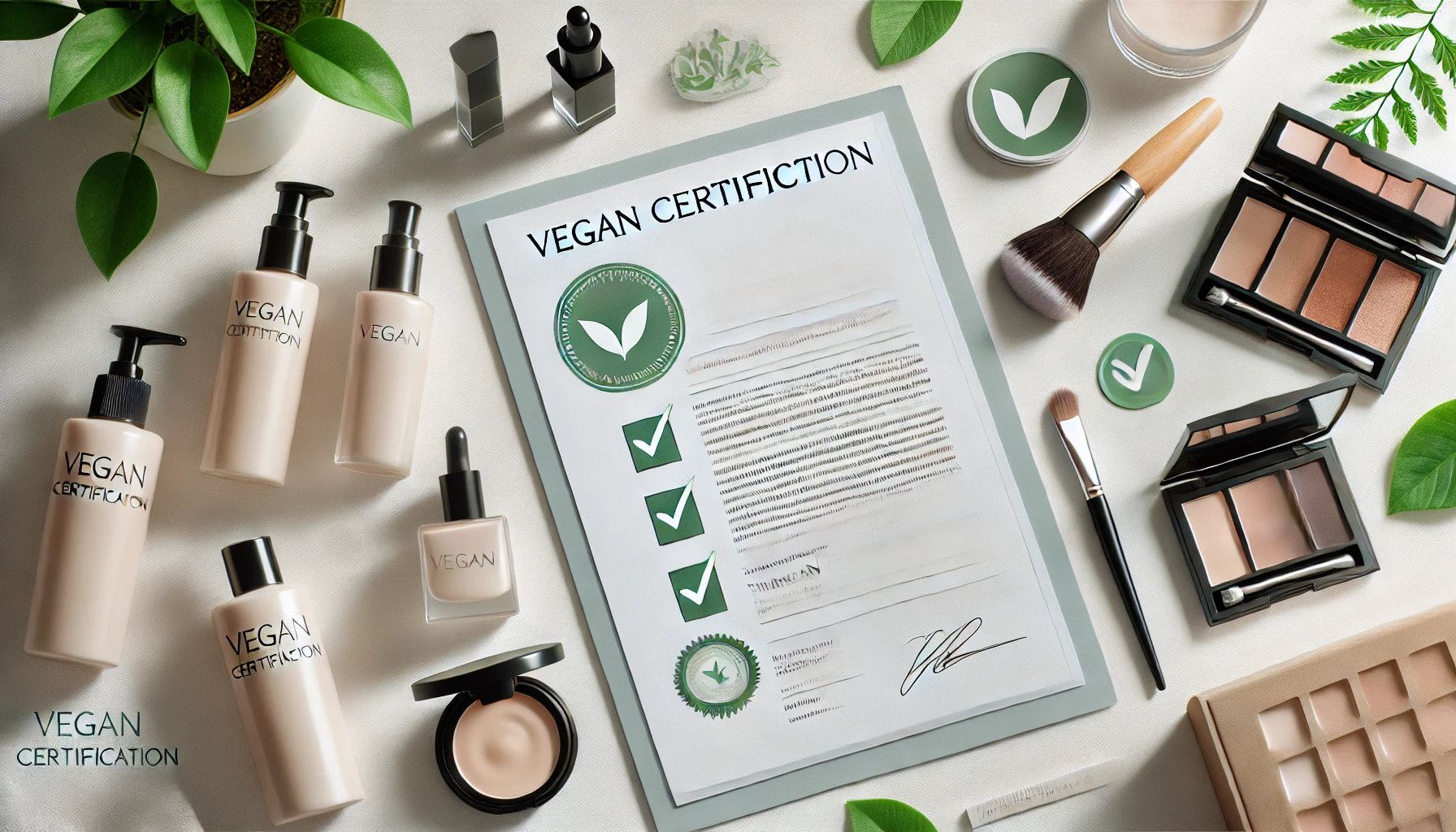
Verify Your Email Address
Please ensure to verify your email for confirmation. We recommend checking your spam and trash folders as well.

As demand for vegan beauty products continues to grow, obtaining a vegan certificate can significantly boost your beauty brand’s credibility and marketability. A vegan certificate reassures consumers that your products are free of animal-derived ingredients and cruelty-free, aligning with their ethical values. This guide provides detailed steps to help you achieve vegan certification.
Vegan certification is an official recognition that verifies your products do not contain any animal-derived ingredients and have not been tested on animals. It is issued by reputable organizations like The Vegan Society, Vegan Action, PETA’s Beauty Without Bunnies, or Leaping Bunny. By obtaining this certification, your brand demonstrates its commitment to cruelty-free and vegan principles, building trust with consumers.
Vegan certification is crucial for several reasons. It builds trust among ethical and environmentally conscious consumers, ensuring they can rely on your brand for cruelty-free products. It also enhances your marketability, allowing you to tap into the growing vegan consumer base while improving your brand reputation as an ethical and responsible company. Additionally, certification ensures your compliance with labeling regulations, allowing you to market your products accurately.
Start by researching and choosing a vegan certification body that aligns with your brand’s vision. Organizations like The Vegan Society, Vegan Action, and PETA offer certification services, each with specific criteria and processes. Carefully evaluate their requirements and select the one that suits your business.
A thorough ingredient audit is essential to meet vegan standards. Ensure your products do not contain animal-derived ingredients such as beeswax, carmine, lanolin, or collagen. If any ingredients are not vegan, reformulate your products using plant-based alternatives. Additionally, verify that your suppliers provide vegan and cruelty-free materials by obtaining written declarations from them.
Vegan certification also requires that no animal testing is involved in the development or production of your products. Confirm that neither your company nor your suppliers conduct, commission, or pay for animal testing. If testing is needed, rely on third-party labs that use non-animal testing methods to verify product safety.
Certification bodies require detailed documentation to verify compliance with their standards. You will need to provide a complete list of all product ingredients, supplier declarations affirming vegan compliance, and exact product formulations showing the absence of animal-derived materials. Proper documentation streamlines the certification process and demonstrates your brand’s transparency.
Once your products and processes are aligned with vegan standards, submit an application to the chosen certification body. The process typically involves completing an application form, submitting the required documentation, and paying an application fee. The fee often depends on the number of products being certified.
After submitting your application, the certification body will review your documentation and may conduct an on-site inspection of your facilities. They will verify compliance with vegan standards and identify any non-compliance issues that need to be addressed. Once all criteria are met, your products will be certified.
Upon receiving your vegan certification, you can display the certification body’s official seal on your product packaging and marketing materials. This seal not only adds credibility to your brand but also attracts consumers seeking vegan and cruelty-free products. Highlighting your certification in your marketing campaigns can further strengthen your brand’s reputation.
Most certification bodies require annual renewals to ensure ongoing compliance. This process includes submitting updated ingredient lists, supplier declarations, and any changes to your product formulations. Regular audits may also be conducted to verify adherence to vegan standards. To stay competitive, keep up with changes in vegan certification requirements and continue refining your practices to meet consumer expectations.
Achieving vegan certification for your beauty brand is a valuable step that demonstrates your commitment to ethical and cruelty-free practices. By carefully auditing your ingredients, ensuring cruelty-free processes, preparing thorough documentation, and completing the certification process, you can position your brand as a trusted choice in the vegan beauty market. Maintaining your certification through regular updates and improvements ensures your brand continues to meet the highest ethical standards.
A vegan certification is an official recognition that your products do not contain any animal-derived ingredients and have not been tested on animals. This certification is granted by recognized organizations that evaluate your products and processes against strict vegan standards. Having this certification assures consumers that your brand aligns with their ethical and dietary values.
Obtaining a vegan certification provides several key benefits:
The first step in obtaining a vegan certification is to identify and choose a reputable certification body. Some of the most recognized vegan certification organizations include:
Each organization has its own criteria and processes, so it’s crucial to research and select the one that aligns best with your brand’s goals and values.
Ensure that all your products meet the requirements set by the certification body. This involves:
Vegan certification also requires that your products are cruelty-free. This means:
Certification bodies require comprehensive documentation to verify compliance. This includes:
After gathering all necessary information and documents, submit your application to the chosen certification body. The application process typically involves:
Once your application is submitted, the certification body will review your documents and may conduct an on-site audit. The certification process includes:
Upon successful completion of the certification process, you will receive your vegan certification. This certification:
Most certification bodies require annual renewals to ensure continued compliance. This involves:
To maintain your certification and uphold your brand’s reputation, continuously improve your practices by:

Please ensure to verify your email for confirmation. We recommend checking your spam and trash folders as well.